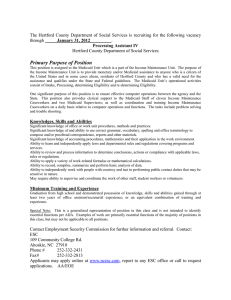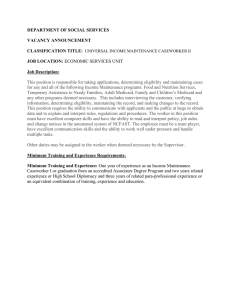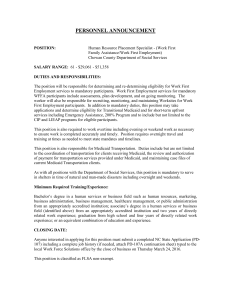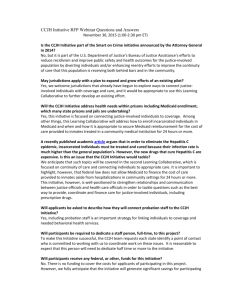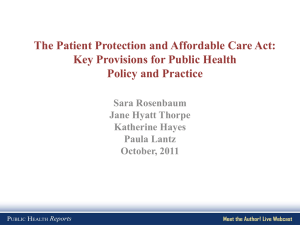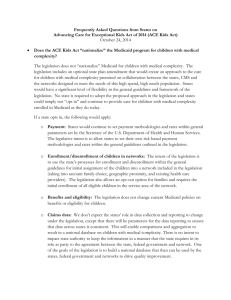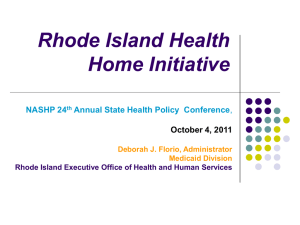ExchangePresentation6.21_final
advertisement
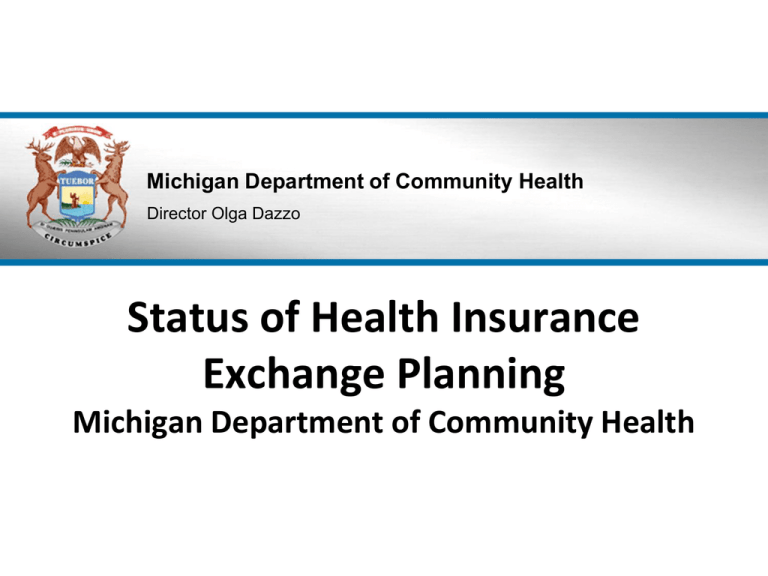
Michigan Department of Community Health Director Olga Dazzo Status of Health Insurance Exchange Planning Michigan Department of Community Health Health Insurance Exchanges: Background • New health insurance market where individuals and small businesses can go to learn about available options and to purchase coverage. • A more organized and competitive market for health insurance that offers: A choice of health plans, common rules in terms of offering and pricing insurance and, provides consumers with information to better understand their health insurance options • Each Health Plan on the exchange must 4 coverage options: – – – – Bronze Silver Gold Platinum 60% actuarial equivalent 70% 80% 90% • Bronze package would cost and cover the least and the platinum would cost and cover the most. • Policies must cover essential services such as doctor visits, hospitalization, prescription drugs, maternity and diagnostic services. 2 Tax Impacts for Individuals and Small Business • Starting in 2014, refundable and advanceable tax credits will be available to assist individuals in purchasing coverage and reduce health care cost sharing for individuals and families with incomes from 133% to 400% of the federal poverty level (i.e. $29,327-$88,200 for a family of four). – Level of subsidy is tied to the second lowest cost Silver plan in the exchange and is on a sliding scale. • Tax credits available to small employers providing health coverage to employees – Employers with no more than 25 employees – Average annual wages of less than $50,000 – Phase I (2010-2013): tax credit up to 35% of employer cost – Phase II (2014-): tax credit up to 50% of employer cost, if purchased through Exchange (for 2 years) • To receive the tax credit, you must purchase coverage through the Exchange. 3 Functions and Options of the Exchange Mandatory Functions Structural Options • Certify and rate qualified health plans • States can: • Operate hotline and Web site – Independently operate the Exchange • Standardize presentation of coverage options – Operate Exchange regionally with other states • Inform individuals of Medicaid, CHIP eligibility and enroll them into these programs • Help calculate plan costs • Determine exemptions from individual mandate – Defer to the federal government for operation of the Exchange • Exchange can be structured to be: – Established within existing or newly established state agency – Quasi-public authority – New non-profit entity 4 FINANCING IMPLEMENTATION Health Insurance Exchanges: Key Dates and Funding Opportunities Spring: Federal Guidance Expected 1/13: HHS to Certify State Exchange 1/14: Exchange Must be Fully Operational Federal Gov’t to Begin IT Testing Cost to establish Exchanges born by Federal Government: Planning Grants, Establishment Grants and Early Innovator Grants 1/15: Exchange Must be Financially Self-Sustaining The State will need to meet specific benchmark criteria, defined by HHS, to apply for the bulk of Exchange establishment funding. Cost Allocation for interface with Medicaid: 90% federal match rate for design, development, installation, or enhancement of Medicaid eligibility systems 5 Exchange Planning Process • On September 30, 2010 Michigan was awarded nearly $1 million in an Exchange State Planning and Establishment Grant. • 3 phases of the 12 month planning process: 1)Establish and implement a plan for stakeholder involvement to ensure broad range of input is considered. 2)Conduct appropriate research to determine the potential eligible population and the impact on Medicaid and other programs. 3)If decision is made to establish state-run Exchange: perform analysis of proposed plans to be offered, as well as Exchange sustainability. 6 Exchange Planning Process • Convened five diverse stakeholder workgroups composed of both the public and private sectors across the state • Workgroups created recommendations and solutions for complex policy, technical, and business matters involving both integration and implementation issues • Recommendations will be presented to the Exchange Steering Committee for determination Steering Committee 7 Health Insurance Exchanges: Issues • Federal timelines require quick decisions. • Almost entirely federally funded, but IT system changes will require a 10% match for Medicaid. – New IT system, modifications to existing IT infrastructure, and new eligibility and enrollment functions will, initially, be some of the most complex issues for state government. • Federal funding is contingent on state actions, including passing legislation, to create the exchange. • State needs to appropriate Exchange establishment grants before work can begin. • Multiple State Agencies impacted: DCH, OFIR, DHS, LARA, DTMB, SBO, Treasury, etc. • Federal Insurance Market Reforms, the introduction of the Exchange and the Medicaid Expansion could cause some market disruption in 2014. 8
